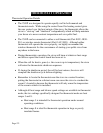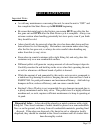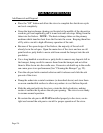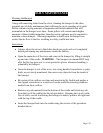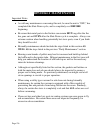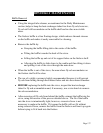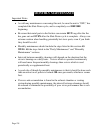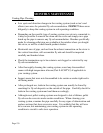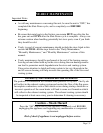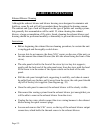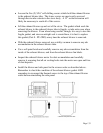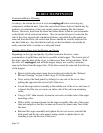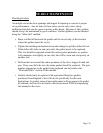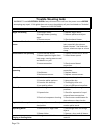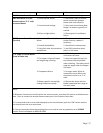
Page | 30
• MONTHLY MAINTENANCE
Venting Pipe Cleaning
• Low spots and direction changes in the venting system (such as tee’s and
elbows) are areas for potential fly-ash accumulation. INSPECT these areas
diligently to keep the venting system in safe operating condition.
• Depending on the specific type of venting system your stove is connected to,
it may be possible to remove the clean-out tee cover and simply run a pipe
brush up the pipe to remove any fly-ash accumulation. Brushes specifically
made for cleaning pellet pipe are available at the retailer where you bought
this stove, as well as at most hearth product dealers.
• Horizontal runs of pipe, such as from the exhaust connection on the stove to
the vertical transition, will accumulate fly ash and should be inspected
carefully and brushed clean.
• Check the termination cap to be certain is not clogged or restricted by any
fly-ash accumulation.
• After thoroughly cleaning the venting system, reseal any disassembled
seams with high temperature silicone (Part # AC-RTV3) if applicable to
your venting system.
• Inspect seams that were not disassembled to be certain a smoke-tight seal is
still being made.
• After prolonged use, leaks in the venting system can usually be found by
searching for fly-ash deposits on the outside of the pipe. Carefully check for
leaks in the venting system and seal them accordingly.
• Although most pellet venting systems are designed to last a lifetime, pellet
fly-ash can be corrosive under certain conditions. When cleaning your
venting system, examine the pipe carefully for any signs of deterioration and
replace sections that show excessive wear. It is unlikely that this will ever
be a concern, but maintaining your venting system in safe operating
condition is crucial to safe stove operation.



